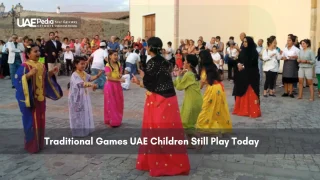What if everything you thought about Gulf cuisine was missing half the story? While aromatic Arabic coffee and sticky-sweet dates remain iconic, the Emirates’ food scene thrives on bold contrasts—ancient spice routes meet Michelin-starred innovation, and humble Bedouin recipes share tables with saffron-infused desserts.
Local traditions reveal surprises at every turn. The Sheikh Mohammed bin Rashid Centre for Cultural Understanding notes that sharing ghawa (coffee) isn’t just hospitality—it’s a ritual woven with cardamom and frankincense. Meanwhile, VisitAbuDhabi.ae highlights how date syrup elevates everything from morning pancakes to savory stews.
This isn’t just about ingredients. It’s about Friday feasts where families gather over majboos spiced with dried lemon, or street food hubs where chefs reinvent chebab (Emirati pancakes) with cream cheese drizzle. From desert camps to Dubai’s neon-lit food trucks, every bite tells a story of trade winds, adaptation, and pride.
We’ll explore how traditional celebrations and family gatherings shaped today’s menus, uncover hidden breakfast gems like balaleet (sweet vermicelli), and reveal where to taste camel milk chocolate. Ready?
- Discover how Bedouin survival meals evolved into UNESCO-recognized traditions
- Explore the role of saffron, rosewater, and fermented fish in iconic dishes
- Find the best spots for heritage dinners and avant-garde food festivals
Tracing the Historical Roots and Bedouin Traditions
Let’s dig deeper than the sand dunes—centuries before skyscrapers, date palms stood as the region’s lifeline. Archaeologists found evidence of these trees thriving here over 4,500 years ago. Their sweet fruit wasn’t just a snack but survival itself—dried for travel, pressed into syrup, or fermented into vinegar.
Ancient Origins and Date Palm Cultivation
Imagine stone tools cracking open date pits in 2500 BC. Early farmers mastered irrigation in harsh climates, channeling groundwater through aflaj systems. Fired clay ovens from this era reveal something unexpected: they baked bread using wild grains like barley long before rice became staple.
Evolution of Bedouin Food Practices
Nomadic life demanded ingenuity. Goat milk thickened with date syrup became portable protein. Camel meat—smoked or sun-dried—lasted months. Spices weren’t just flavor: turmeric preserved meats, while cardamom masked strong scents in communal tents.
Trade routes brought saffron from Persia and cloves from Zanzibar. These blended with local ingredients, creating dishes like harem al-aseel (date-stuffed lamb) or haleem (spiced wheat porridge). As one Emirati chef told us, “Our ancestors’ pantry was the desert—they made magic from dust.”
- Date palms provided shade, building materials, and 80% of dietary calories
- Bedouin spice blends balanced nutrition and medicinal needs
- Fermented fish sauce (tereed) added umami to grain dishes
Modern Flavors, Global Influences, and Dining Trends
Step into a Dubai food hall, and you’ll taste the world in one bite—Korean tacos share counters with saffron-kissed lamb sliders. This isn’t fusion for novelty’s sake. It’s a dialogue between generations, where chefs honor emirati dishes while riffing on global techniques.
International Cuisine Meets Local Heritage
At Al Fanar Restaurant, smoked machboos gets a Japanese twist with wasabi-infused rice. Over in Abu Dhabi, food trucks serve chebab pancakes stuffed with brie and date syrup. “We treat spices like collaborators,” says chef Amina Al Maktoum. “Cardamom whispers to cinnamon. Saffron dances with sumac.”
| Traditional Dish | Modern Twist | Key Ingredients |
|---|---|---|
| Harees (wheat porridge) | Truffle-infused harees | Emirati wheat, black truffle |
| Lugaimat (fried dough) | Matcha-glazed lugaimat | Local honey, Japanese green tea |
| Grilled Hammour | Hammour ceviche | Local fish, Peruvian lime |
Festivals and Future Flavors
Dubai Food Festival turns the city into a playground each February. Imagine live stations where chefs fold cheese into balaleet noodles or drizzle rosewater on shawarma tacos. At Taste of Abu Dhabi, you’ll find camel burgers sharing menus with sushi platters—all seasoned with the region’s signature spices.
Specialty cafes now reinvent coffee rituals too. Sip cardamom cold brews in glass towers or saffron lattes at beachside pop-ups. As one barista told us, “We’re serving history in a cup—just with better Wi-Fi.”
These trends thrive because they respect roots. Even avant-garde plates feature lamb from Al Ain or fish from Fujairah. During local celebrations, you’ll still find families gathering over shared platters—proof that innovation and tradition can feast together.
Exploring UAE culinary culture: Traditional Dishes and Time-Honored Recipes
Ever tasted hospitality? In Emirati homes, it arrives steaming in petite cups—cardamom-kissed coffee paired with plump dates. This ritual isn’t just refreshment. It’s a centuries-old language of welcome, where bitter ghawa balances date sweetness like desert sun meets cool night air.
Coffee, Dates, and the Art of Warm Welcomes
Hosts pour coffee from brass dallah pots into handleless cups, always offering three rounds. “The first sip honors tradition,” explains Abu Dhabi chef Fatima Al Remeithi. “The second celebrates connection. The third? That’s when stories unfold.” Dates—stuffed with almonds or dipped in date syrup—add earthy richness to each bitter-sweet sip.
Signature Dishes: From Machboos to Luqaimat
Meat and rice take center stage in machboos, where turmeric-stained grains hug tender lamb or fish. But the magic lies in loomi (dried lime)—its citrusy punch cutting through saffron’s floral notes. For dessert? Golden luqaimat dumplings crackle under rosewater glaze.
| Dish | Key Ingredients | Serving Style |
|---|---|---|
| Machboos | Lamb, basmati rice, dried lime | Family platter with yogurt |
| Luqaimat | Cardamom dough, date syrup | Warm, drizzled with sesame |
| Khameer Bread | Saffron, camel milk | Stuffed with cream cheese |
Bread, Pancakes, and the Role of Spices
Morning kitchens hum with khameer bread’s yeasty scent—saffron threads staining dough golden. Neighbors trade chabab pancakes drenched in syrup, their edges crisped over clay ovens. “Spices aren’t just flavor,” notes Al Remeithi. “Turmeric heals, cardamom freshens breath. Our ancestors cooked with purpose.”
Today’s chefs honor these roots while innovating. Camel milk enriches bread doughs, while local vegetables brighten meat stews. Craving authenticity? Traditional Emirati cuisine thrives in Abu Dhabi’s heritage cafes—where every bite whispers Bedouin ingenuity.
Final Tasting: Embracing the Rich Tapestry of UAE’s Culinary Journey
Imagine ending a desert day with crisp bread dipped in camel milk—centuries-old simplicity meeting tomorrow’s bold flavors. From Bedouin spice blends to saffron-dusted lattes, every meal here whispers history while shouting innovation.
Local kitchens still simmer with tradition. Rice dishes like machboos honor ancient trade routes, while modern twists on festive gatherings blend global techniques with Gulf soul. Even coffee rituals—bitter ghawa paired with sticky dates—anchor fast-paced cities to their roots.
Today’s chefs play with contrasts. Camel milk chocolate melts alongside cardamom ice cream. Street vendors stuff chebab pancakes with cream cheese, proving that respect for heritage fuels creativity. As one home cook told us, “Our recipes aren’t frozen in time—they’re alive, like the desert after rain.”
Ready to taste this journey? Seek family-run spots where luqaimat dough balls glisten with date syrup. Or join Abu Dhabi’s festive feasts, where lamb roasts meet truffle-infused sides. Every bite—whether in a skyscraper bistro or a sandside majlis—weaves past and future into something unforgettable.
Pack curiosity instead of a map. Let saffron guide you. The Emirates’ table is set—come hungry.
These spices add vibrant color and earthy depth to dishes like machboos and harees. Saffron’s floral notes and turmeric’s warmth reflect trade routes that shaped local flavors—plus, they’re staples in celebratory meals.
Absolutely! Try camel milk karak chai at spots like Al Fanar Restaurant or camel meat burgers at Local Fire. It’s leaner than beef, with a subtly sweet taste tied to Bedouin heritage.
Yes! Dishes like saloona (spiced veggie stew) and khameer bread stuffed with cheese or date syrup offer plant-based richness. Many breakfast spreads also feature balaleet (sweet vermicelli) with eggs and saffron.
Gahwa is lightly roasted, infused with cardamom, and often served unsweetened with dates. It’s a symbol of hospitality—pour it from a dallah (pot) into tiny cups, and sip slowly like a local.
Visit cultural hubs like Sheikh Mohammed Centre for Cultural Understanding in Dubai or Qasr Al Hosn in Abu Dhabi. Many host family-style meals where you’ll taste harees (wheat-and-meat porridge) or jisheed (shark curry).
Dates grow abundantly here, so their syrup adds natural sweetness to marinades, drizzles over pancakes, or balances spices in stews. It’s a versatile ingredient that’s been used for centuries!


















